Recent Posts
Clearing the Air: Harnessing the Power of Ozone Treatments to Eradicate Smoke Odor
4/17/2024 (Permalink)
Smoke odor is not only persistent but can also be a constant reminder of past fire incidents. While tackling this challenge might seem daunting, ozone treatments emerge as a powerful solution in the restoration toolkit. In this blog, we'll explore the effectiveness and considerations of using ozone treatments to eliminate smoke odor.
Understanding Ozone: A Natural Purifier
Ozone, a molecule composed of three oxygen atoms, serves as a natural purifier in the Earth's atmosphere. This characteristic is harnessed in controlled environments to neutralize and eliminate stubborn odors, particularly those left behind by smoke. Ozone treatments involve the introduction of ozone molecules into the affected space, initiating a process that breaks down odor-causing compounds and leaves behind a fresher environment.
How Ozone Treatments Work
Oxidation of Odor Molecules:
- Ozone treatments work by oxidizing the molecules responsible for smoke odor. Ozone reacts with these compounds, altering their chemical structure and neutralizing the unpleasant smell.
- Penetration into Pores and Fabrics:
- Ozone has the ability to penetrate porous materials and fabrics, reaching areas that might be challenging for traditional cleaning methods. This comprehensive coverage ensures that even hidden sources of smoke odor are addressed.
- Elimination of Lingering Odors:
- Unlike masking agents that temporarily cover up odors, ozone treatments aim to eliminate the source of the smell. This results in a longer-lasting and more effective solution to smoke odor removal.
- Non-Residual Process:
- Ozone treatments leave no chemical residues behind. Once the treatment is complete, the ozone naturally reverts to oxygen, leaving the treated space fresh and odor-free.
Considerations for Ozone Treatments
- Professional Expertise:
- Ozone treatments should be conducted by trained professionals with expertise in restoration. Proper equipment and knowledge are essential to ensure safe and effective application.
- Vacate the Treated Space:
- During ozone treatments, occupants and pets should vacate the treated space. Ozone can cause respiratory irritation, and safety precautions are necessary to minimize exposure.
- Duration of Treatment:
- The duration of ozone treatments depends on the severity of the smoke odor. Professional assessments guide the appropriate length of treatment to achieve optimal results.
- Post-Treatment Ventilation:
- After ozone treatments, thorough ventilation is crucial. Allowing fresh air to circulate helps dissipate any remaining ozone and ensures a safe environment for reoccupation.
Ozone treatments stand as a powerful and non-intrusive method for eliminating smoke odor. By leveraging the natural oxidizing properties of ozone, restoration professionals can provide clients with a lasting solution to a challenging problem. As with any restoration technique, it is imperative to engage the services of experienced professionals who understand the intricacies of ozone treatments, ensuring a successful outcome and a breath of fresh air for spaces plagued by persistent smoke odors.
The Silent Intruder: Understanding Mold Development in a Leaking Roof
3/6/2024 (Permalink)
A leaking roof is more than a structural concern; it opens the door to potential mold growth, silently infiltrating your home. In this blog, we'll explore the timeline of mold development in the aftermath of a leaking roof.
The Initial Impact
When a roof begins to leak, the process of mold development is set in motion. While mold spores are present in the environment, their activation and growth depend on the availability of moisture, a key factor introduced by a leaking roof.
Immediate Consequences
Day 1-2:
In the initial days following a roof leak, the affected materials, such as insulation, ceiling tiles, and wooden structures, absorb moisture. While visible mold may not be apparent, the conditions for mold growth are established.
Day 2-7:
As the days pass, the moisture content in affected materials increases. Mold spores, present in the air and on surfaces, react to the moisture, and the germination process begins. However, visible mold growth may not yet be noticeable.
Visible Mold Growth
Day 7-14:
Within the first two weeks, if the leaking persists, you may start to observe visible signs of mold growth. This can manifest as discoloration on walls and ceilings, often appearing as dark spots or patches.
Established Mold Colonies
Day 14-30:
Beyond the initial two weeks, if the leaking roof persists, mold colonies become more established. The growth may accelerate, especially in materials with high cellulose content, such as drywall and wood.
Day 30 and Beyond
Continued exposure to moisture due to a leaking roof creates an environment conducive to sustained mold growth. The mold colonies may spread across surfaces and materials, leading to more extensive damage.
Prevention and Intervention:
Upon Discovery
Identifying a leaking roof promptly is crucial to preventing extensive mold growth. Once the leak is addressed, immediate action is necessary to dry and remediate affected materials.
Engage the services of professionals with expertise in water damage and mold remediation. They can assess the extent of the damage, address the root cause of the leak, and implement effective remediation measures.
The timeline of mold development in a leaking roof underscores the importance of swift action. Addressing roof leaks promptly and intervening in the early stages of mold growth are key to minimizing the impact on your home. By understanding the progression of mold development and enlisting professional assistance, you can safeguard your property from the silent intruder that thrives in the wake of water intrusion.
Safeguarding Your Home: How Smart Home Technology Prevents and Monitors Water Damage
2/18/2024 (Permalink)
Water damage can cause significant harm to our homes and possessions. However, with the advent of smart home technology, we now have innovative tools at our fingertips to monitor and prevent water damage more effectively. In this blog post, we will explore how smart home technology is revolutionizing water damage monitoring and prevention.
Smart Water Leak Detectors
Smart water leak detectors are devices that can detect the presence of water in areas prone to water damage, such as basements, laundry rooms, or under sinks. These detectors can send immediate notifications to your smartphone or smart home hub, alerting you to potential leaks or flooding. By promptly identifying water issues, you can take immediate action to prevent extensive damage.
Remote Shut-Off Valves
Smart home technology enables the installation of remote shut-off valves for your water supply. With a few taps on your smartphone or through voice commands to your virtual assistant, you can remotely shut off the water supply in case of a leak or other water-related emergencies. This quick response can significantly reduce the potential damage caused by water leaks.
Moisture Sensors and Flood Alarms
Moisture sensors and flood alarms are smart devices that can detect abnormal levels of moisture in specific areas of your home. Placed near appliances, pipes, or in areas prone to leaks, these sensors can detect even the slightest increase in moisture and trigger alarms or push notifications to your devices. This allows for quick intervention before the water damage escalates.
Smart Irrigation Systems
Smart irrigation systems utilize weather data and soil moisture sensors to optimize watering schedules for your lawn and garden. By preventing overwatering or irrigation system malfunctions, these systems can minimize the risk of water damage to your landscape and the surrounding property.
Integration and Automation
One of the advantages of smart home technology is the ability to integrate various devices and automate actions. For example, you can set up rules so that if a water leak is detected, the smart home hub can automatically shut off the water supply, send notifications to your smartphone, and activate cameras to record the affected area. This integration and automation enable a seamless response to potential water damage incidents.
Real-Time Monitoring and Data Analytics
Smart home technology offers real-time monitoring and data analytics for water usage patterns. By tracking water consumption, you can identify irregularities that may indicate leaks, inefficient plumbing, or water-wasting behaviors. This information allows you to take proactive steps to address the root causes and prevent water damage.
Remote Access and Control
With smart home technology, you can access and control various water-related devices remotely. Whether you are at home, at work, or on vacation, you can monitor and control water-related devices, such as valves or irrigation systems, through smartphone apps or web interfaces. This remote access empowers homeowners to take immediate action to mitigate potential water damage risks.
Smart home technology is transforming the way we monitor and prevent water damage. With features such as smart water leak detectors, remote shut-off valves, moisture sensors, smart irrigation systems, integration and automation, real-time monitoring, data analytics, and remote access and control, homeowners can now proactively protect their properties and belongings from water damage.
Exploring the Devastating Impact of Fire Damage on Flooring and Carpets
11/28/2023 (Permalink)
Fires can cause significant damage to properties, including the flooring and carpets. The impact of fire damage on these surfaces can be devastating and may require extensive restoration. In this blog, we will explore the effects of fire damage on flooring and carpets and the steps that can be taken for restoration.
Damage to Flooring
The type of flooring in a property will determine the extent of damage from fire. For instance, wooden or laminate flooring can suffer damage when exposed to high levels of heat. The wood may warp or buckle if it absorbs moisture, and the finish may bubble or peel off. Low-quality subfloors may also be damaged by the heat, as overexposure to high temperatures can cause cracking and distortion.
Tiles and stone floors are much more durable, but they may still be affected by fire damage. Tiles may crack or become dislodged due to exposure to high temperatures or rapid cooling. Stone floors may suffer discoloration, cracking, and chipping.
Carpets and Rugs
Carpets and rugs are susceptible to fire damage and can often be challenging to restore. Smoke and fire residues can leave behind a strong odor and discoloration, making it necessary to remove and replace the damaged carpets. The heat from a fire can cause synthetic carpet fibers to melt and stick together, making them hard and brittle. The warping or buckling of subfloors can also cause carpets and rugs to become lumpy and uneven.
Restoration Process
The restoration process for fire-damaged flooring and carpets is a delicate and time-sensitive process. The first step is to assess the extent of the damage to determine whether the flooring or carpet requires replacement or restoration. If possible, the damaged area should be isolated to prevent the spread of soot or ash.
For flooring, the subfloor may require replacement or repair, depending on the extent of the damage. Wooden or laminate flooring may need to be refinished to repair any bubbling or peeling. The tiles may need grout repair or replacement, and natural stone may require honing or polishing.
For carpets, restoration will depend on the extent of the damage. Cleaning solutions and equipment, such as vacuums, steamers, and dehumidifiers, may be used to remove the soot and smoke odor and begin the restoration process. However, in severe cases, the carpets may need replacement.
Fire damage can have a profound impact on the flooring and carpets of a property. Smoke, heat, and soot can cause damage ranging from discoloration to warping and melting. The restoration process involves careful assessment, cleaning, and repair of the affected area to restore it to its original condition. It is essential to work with fire restoration professionals who have the expertise and equipment to properly handle the damage while minimizing further harm. Through restoration, it is possible to return your property's flooring and carpets to their pre-fire condition.
A Step-by-Step Guide to Removing Mold Stains from Clothing and Fabrics
11/9/2023 (Permalink)
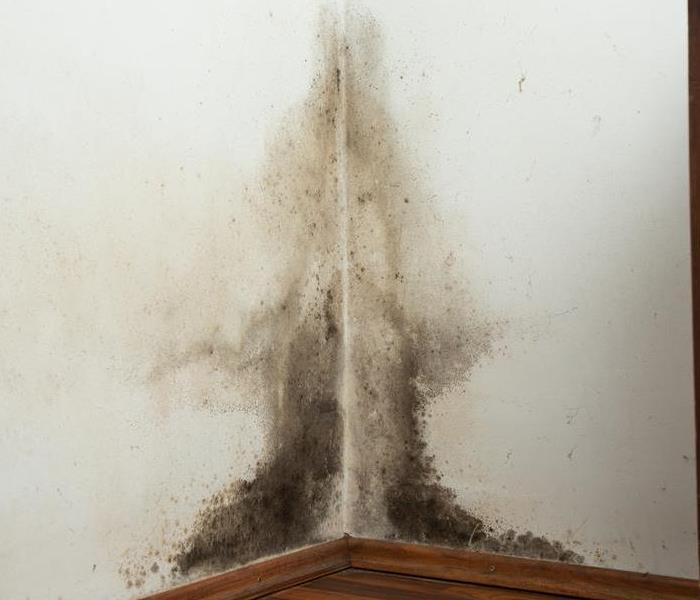 Follow step by step guides to prevent your belongings from mold damage.
Follow step by step guides to prevent your belongings from mold damage.
Discovering mold stains on your favorite clothing or fabrics can be disheartening. In this blog, we will provide a step-by-step guide to removing mold stains. By following these simple techniques, you can rescue your garments and fabrics and restore them to their original condition.
Safety Precautions
Before beginning the removal process, it's important to take necessary safety precautions. As mold stains are visible signs of mold growth, ensure you handle the affected materials in a well-ventilated area to prevent the spread of spores. Wear gloves and a face mask as a precautionary measure. Remember, the focus here is solely on stain removal, not addressing any potential health risks.
Dry Brushing or Vacuuming
Start by gently dry brushing or using a vacuum cleaner with a brush attachment to remove loose mold spores from the surface of the fabric. Always perform this step outside or in a well-ventilated area to prevent spores from dispersing indoors. Be cautious not to press too hard as it may force mold spores deeper into the fabric.
Pre-Treat the Stains
To pre-treat the mold stains, create a solution by mixing equal parts of white vinegar and water. Apply the solution directly to the stained areas and gently scrub with a clean cloth or soft-bristled brush. Let the solution sit for about 15 minutes before moving on to the next step.
Laundering the Garments or Fabrics
After pre-treating the stains, launder the garments or fabrics as usual. Add a cup of vinegar to the wash cycle to further assist in stain removal. Use the appropriate water temperature and recommended laundry detergent for the fabric. If possible, hang the items out to dry in the sunlight, as the sun's natural bleaching effect can help eliminate residual stains.
Assessing and Repeating the Process
Once the garments or fabrics have gone through the wash, carefully inspect them for any remaining mold stains. If any spots persist, repeat the pre-treatment step and wash them again. It may be necessary to repeat the process a few times for stubborn stains. Avoid drying the items until the stains are completely gone, as heat can set the stains and make them more difficult to remove.
Preventive Tips to Avoid Mold Stains on Clothing and Fabrics
To minimize the chances of mold stains appearing on your clothing and fabrics in the first place, it's important to take preventive measures. Ensure proper ventilation in storage areas and avoid storing damp or wet clothes. Keep your wardrobe and storage spaces clean and dry, and periodically inspect garments for any signs of moisture or mold. If you live in an area with high humidity, consider using dehumidifiers or moisture-absorbing products to maintain optimal conditions for your fabrics.
By following this step-by-step guide to removing mold stains from clothing and fabrics, you can restore your items back to pre mold condition. Remember to approach this as a stain removal process only, and take preventive measures to ensure your clothes and fabrics remain mold-free in the future.
Creating a Flood-Resistant Landscape: The Key Role of Landscaping in Preventing House Flooding
10/18/2023 (Permalink)
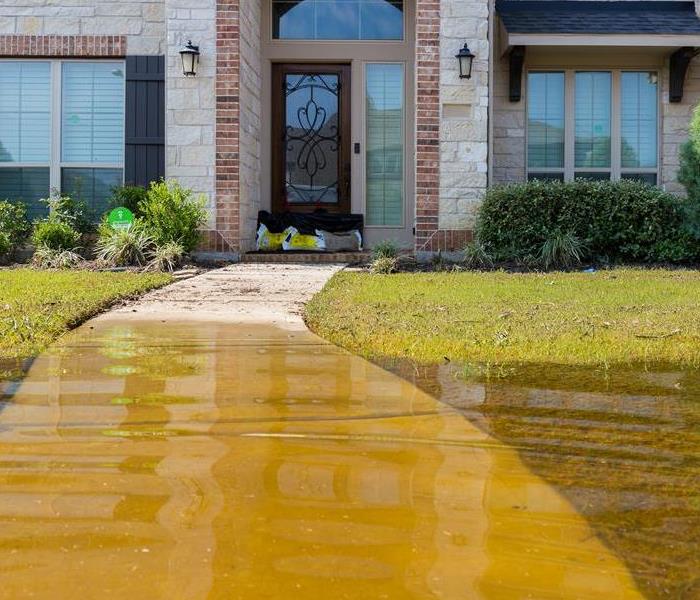 Landscaping can play a vital role in preventing flooding from your property.
Landscaping can play a vital role in preventing flooding from your property.
Landscaping not only enhances the aesthetic appeal of our properties but can also play a significant role in preventing house flooding. By strategically planning and designing our outdoor spaces, homeowners can mitigate the risk of flooding and water damage. In this blog, we will explore the importance of landscaping in flood prevention, offering valuable tips to protect your home from potential water-related disasters.
Proper Grading and Sloping
One of the most fundamental aspects of flood prevention is proper grading and sloping of the landscape. Ensuring that the land around your home slopes away from the foundation will direct water away from the house during heavy rainfall. This prevents pooling of water and reduces the likelihood of water seeping into the basement or crawl spaces. Professional landscapers can assess your property's terrain and make necessary adjustments to optimize grading and sloping for effective flood prevention.
Strategic Rainwater Diversion
Rainwater diversion techniques can significantly reduce the risk of flooding. By implementing strategies such as installing rain barrels, French drains, or dry wells, homeowners can redirect excess rainwater away from their homes. These methods help to capture and store rainwater for irrigation purposes or channel it into permeable areas of the landscape where the water can naturally soak into the ground. Proper rainwater diversion not only prevents flooding but also conserves water resources and promotes a sustainable landscape.
Well-Planned Drainage Systems
An effective drainage system is crucial for flood prevention. Incorporating features like gutters, downspouts, and catch basins can efficiently collect and redirect water away from the foundation. Connecting downspouts to underground drainage pipes or installing permeable pavers can further facilitate proper water dispersion. Regular maintenance of these drainage systems, including clearing debris and ensuring proper functioning, is essential for their effectiveness. Consulting with a professional landscaper or drainage expert can help homeowners design and implement a comprehensive drainage system tailored to their property's needs.
Strategic Plant Selection
Choosing the right plants for your landscape can contribute to flood prevention. Opt for plants that are suited to your soil type and climate, as they are more likely to establish deep root systems, enhancing soil absorption capacity during heavy rainfall. Additionally, incorporating plants that thrive in wet conditions, such as wetland plants or rain gardens, can help naturally absorb excess water. Native grasses and groundcovers are also effective in minimizing soil erosion and promoting water infiltration. Strategic plant selection, along with appropriate watering practices, can positively impact your landscape's ability to manage excess water and prevent flooding.
Landscaping plays a vital role in preventing house flooding and protecting your property from water-related disasters. By focusing on proper grading and sloping, rainwater diversion, well-planned drainage systems, and strategic plant selection, homeowners can enhance their landscape's ability to manage excess water effectively. Implementing these measures, with the guidance of landscape professionals, will help safeguard your home and create a resilient outdoor space.
How To Protect Your Electronics During Storms
9/28/2023 (Permalink)
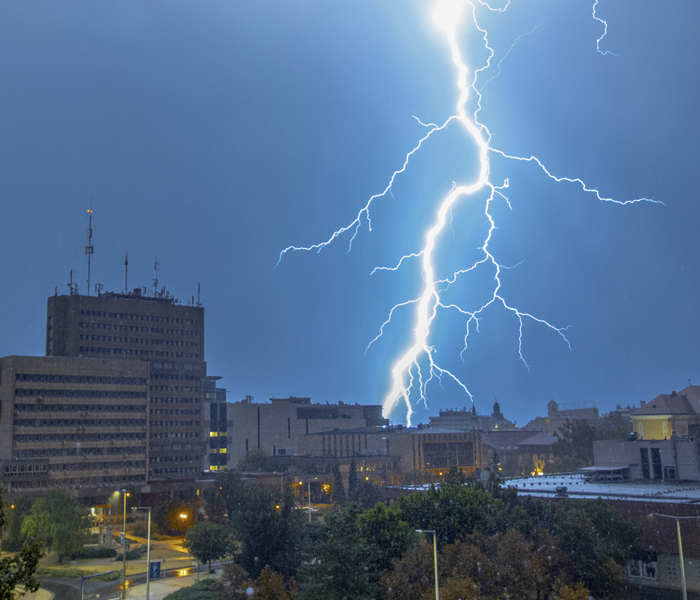 Protecting your electronics during storms require proactive measures and preparedness.
Protecting your electronics during storms require proactive measures and preparedness.
Storms can be a significant threat to your electronics. Power surges and lightning strikes can cause costly damage to your devices. Protecting your electronics during storms is essential to minimize the risks of electrical damage, data loss, and even fire hazards. In this blog post, we will discuss some practical tips to safeguard your electronics during storms.
Unplug Your Electronics
One of the easiest ways to protect your electronics during a storm is to unplug them. Unplug all your electronic devices, including computers, TVs, gaming consoles, and home appliances. This will minimize the risk of power surges and protect your devices from lightning strikes. Ensure that you turn off and unplug all electronics before leaving your home or going to bed.
Installing surge protectors in your home is an effective way of protecting your electronics from power surges. A surge protector can absorb excess electricity and prevent it from reaching your devices, thus reducing the risk of electrical damage. Invest in high-quality surge protectors that protect against both voltage surges and frequency surges. Make sure you plug all your electronics into the surge protectors for maximum protection.
Invest in an Uninterruptible Power Supply (UPS)
An uninterruptible power supply (UPS) is a backup system that provides power to your electronics during power outages. A UPS provides temporary power to your electronics, giving you sufficient time to save your work and shut down your devices safely. Investing in a UPS can also protect your devices from voltage fluctuations and power surges. Choose a UPS that's compatible with your electronics and has enough capacity to meet your power needs.
Protect Your Electronics from Water Damage
Storms can also cause water damage to your electronics. Protect your devices from water damage by keeping them away from windows and doors during a storm. If possible, move them to higher ground or a dry area. Cover your electronics with plastic bags or waterproof covers to keep them dry. If your electronics get wet during a storm, turn them off, unplug them, and don't use them until they are fixed.
Using battery-powered devices during a storm can also protect your electronics from electrical damage. Use battery-powered lamps, flashlights, and radios instead of lighting and appliances that rely on the power grid. Battery-powered devices are less vulnerable to power surges and electrical damage during a storm. Keep extra batteries on hand and replace them regularly to ensure your devices are always ready when you need them.
Backup Your Data
Data loss is another risk associated with electrical storms. Protect your data by backing it up to an external hard drive or cloud storage. This will ensure that your important files are safe in case of electrical damage or data loss. Back up your data regularly, so you always have the latest version of your files.
If you have an outdoor antenna or dish, turn it off and unplug it during a thunderstorm. Lightning strikes can damage these devices, causing costly repairs and endangering anyone nearby. Turning them off and unplugging them will protect them from lightning strikes and prevent electrical damage to your home.
Protecting your electronics during storms requires proactive measures and preparedness. Unplug your electronics during a storm, install surge protectors, and invest in an uninterruptible power supply. Protect your electronics from water damage, use battery-powered devices, and backup your data regularly. Consider turning off and unplugging your electronics antenna or dish during a thunderstorm. By implementing these strategies, you can significantly minimize the risk of electrical damage, data loss, and even fire hazards to your electronics during a storm.
How Do I Keep My Building Secure After a Fire? A Guide to Protecting Your Property Post-Fire
8/9/2023 (Permalink)
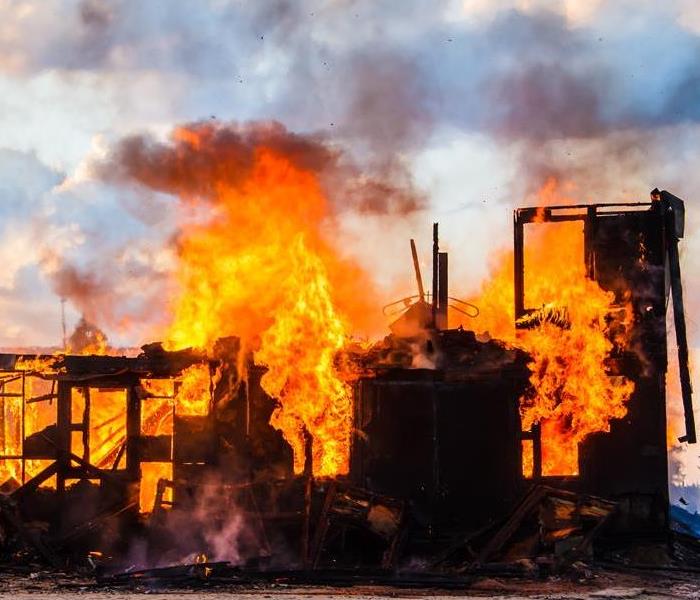 Securing your building after a fire to minimize further damage to help move forward.
Securing your building after a fire to minimize further damage to help move forward.
Experiencing a fire in your building can be a devastating and traumatic event. In the aftermath, it's crucial to ensure that your building remains secure and safe, even during the restoration process. In this blog post, we'll discuss how to keep your building secure after a fire and provide helpful tips for protecting your property in the long run.
Secure Your Building Immediately
After a fire, it's essential to secure your building immediately to prevent further damage or theft. Contact your insurance company and a professional fire damage restoration company to board up any openings, such as doors and windows, and to minimize exposure to the elements.
Installing temporary fencing around your building can provide additional security and restrict access to your property. This can help to keep out curious onlookers or opportunistic thieves who may try to take advantage of the damage to your building.
Identify and Document All Damages
It's crucial to document all damages and losses in detail for insurance and legal purposes. Take photos and videos of the damage, and keep a list of all damaged property, including furniture, electronics, and fixtures. If possible, remove and secure any valuable items from your building. This may include jewelry, artwork, and important documents. Store them in a safe, secure location until needed.
Monitor Your Building
Consider installing surveillance cameras and security systems to help monitor your building 24/7. This can help to deter any intruders or vandals and allow you to monitor any activities in real-time. Once your building is secure, it's essential to continue with maintenance and repairs to prevent further damage or loss. This may include routine cleaning, HVAC maintenance, and structural repairs.
Educate Your Staff and Tenants
If your building houses multiple tenants or has staff, it's crucial to educate them on fire safety and emergency protocols. This can help to prevent future fires and minimize damage if a fire does occur. Evaluate your existing fire safety measures and make any necessary improvements or upgrades. This may involve installing or upgrading smoke detectors, fire extinguishers, and sprinkler systems. It's important to follow local fire safety regulations and guidelines to ensure your building is up to code
Schedule regular inspections with a qualified fire safety professional to ensure that your building remains compliant with fire safety standards. These inspections should cover all fire safety equipment, including alarms, extinguishers, and emergency lighting. Implementing a proactive approach to fire safety can help prevent future incidents.
Enhance Building Security Systems
Evaluate your building's security systems and consider enhancing them to provide better protection. This may involve installing access control systems, security cameras, and alarm systems. Hire a reputable security company to customize a security plan that meets the unique needs of your building.
Create a comprehensive emergency response plan that outlines the appropriate steps to take in case of a fire or other emergencies. Educate your staff and tenants on the plan and conduct regular drills to ensure everyone is familiar with the procedures. Include evacuation routes, designated meeting points, and instructions for reporting emergencies.
Communicate with Insurers and Authorities
Make sure to keep your insurance company informed about any security measures you implement following a fire. This can help ensure that your building remains adequately covered in case of future incidents. Additionally, communicate with local authorities and fire departments to maintain a positive relationship and access their expertise.
Building security is an ongoing effort, so it's crucial to review and update your security measures regularly. Stay up to date with the latest technologies, best practices, and regulations in fire safety and building security. Conduct periodic assessments to identify potential vulnerabilities and address them promptly.
Experiencing a fire in your building can be traumatic, but taking steps to secure your property and minimize further damage can help you move forward. With careful planning and attention to detail, you can rebuild and restore your property to its former glory.
Protecting Your Home: How to Prevent Water Damage While on Vacation
7/27/2023 (Permalink)
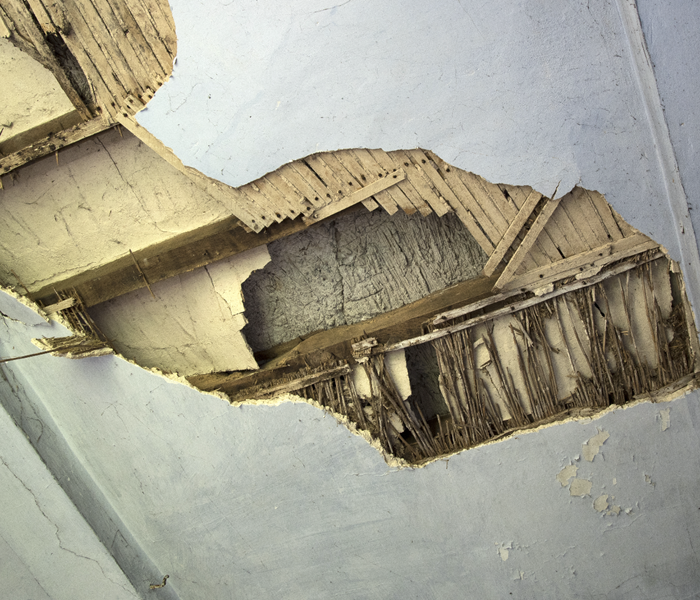 Take proactive measures to prevent water damage while on vacation.
Take proactive measures to prevent water damage while on vacation.
Going on vacation is an exciting time to relax and unwind, but it's also crucial to ensure that your home is protected while you're away. One of the significant risks during your absence is water damage, which can lead to costly repairs and extensive property damage. In this blog, we will provide you with essential tips on how to prevent water damage while you're on vacation, giving you peace of mind and a worry-free getaway.
Inspect and Maintain Your Plumbing
Before leaving for vacation, inspect your plumbing system for any leaks, drips, or signs of damage. Repair any issues you find or hire a professional plumber to address them. Ensure that all faucets, toilets, and appliances connected to water sources are in proper working condition.
Consider shutting off the main water supply to your home if you're going on an extended vacation. This step will prevent water flow to the entire property, reducing the risk of pipe bursts or leaks. Alternatively, you can shut off the water supply to specific areas prone to water damage, such as bathrooms, laundry rooms, or basements.
Insulate Pipes
Insulating exposed pipes, especially in unheated areas of your home, can help protect them from freezing and potential ruptures. Use pipe insulation sleeves or heat tape to provide a barrier against low temperatures. This step is particularly crucial during the winter months or if you live in a colder climate.
If your home has a sump pump or other water mitigation systems, ensure they are in proper working condition before you leave. Test the sump pump by pouring water into the pit to verify that it activates and pumps the water out effectively. If you have a backup power source, such as a generator or battery backup, make sure it's functional.
Clear Gutters and Downspouts
Clean out gutters and downspouts to ensure proper drainage of rainwater away from your home's foundation. Clogged gutters can cause water to overflow and seep into the walls or basement, leading to water damage. Consider installing gutter guards to minimize debris accumulation.
Invest in water leak detection devices or smart home systems that can alert you to potential leaks or abnormal water activity while you're away. These devices can detect leaks and send notifications to your smartphone, allowing you to address the issue promptly, even from a distance. Ask a reliable neighbor, friend, or family member to check on your home periodically while you're on vacation. Provide them with your contact information and instructions on how to reach you in case of an emergency. They can inspect for any signs of water damage, leaks, or unusual odors and take action if necessary.
Unplug Electronics and Appliances
To minimize the risk of electrical malfunctions and water-related accidents, unplug non-essential electronics and appliances before leaving. This precautionary measure can prevent potential water damage caused by faulty appliances or power surges.
Maintain an appropriate temperature setting in your home to prevent freezing pipes during colder months. Set the thermostat to a minimum temperature that will keep the interior warm enough to avoid pipe bursts but not excessively high to save energy.
Inform your water provider of your absence and request that they monitor your water usage for any irregularities. Some providers offer vacation services where they can shut off water to your property at the meter temporarily.
By taking proactive measures to prevent water damage while you're on vacation, you can safeguard your home and avoid potential costly repairs and property damage. Inspecting and maintaining your plumbing, shutting off the main water supply, and contacting your water company are all essential steps to protect your home while you're away. By following these tips, you can enjoy your vacation with peace of mind, knowing that your home is safe from water damage.
Battling the Gusts: Effective Strategies to Mitigate Wind Damage and Protect Your Property
6/12/2023 (Permalink)
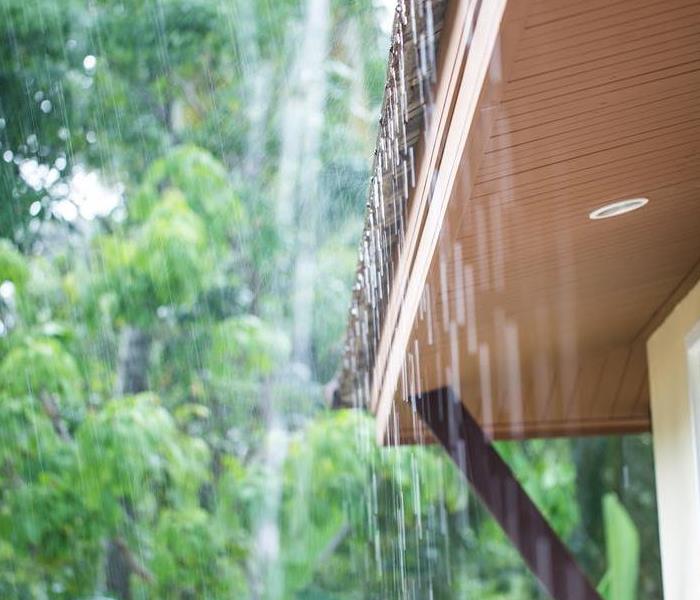 Protect your home from wind damage.
Protect your home from wind damage.
Windstorms can be powerful and destructive, causing extensive damage to homes and properties. However, by implementing proactive measures and employing the right strategies, you can mitigate the risk of wind damage and protect your property. In this blog, we'll explore essential techniques and practical tips to help you fortify your home and minimize the potential impact of strong winds.
Strengthen Your Roof
Ensure that your roof coverings, such as shingles or tiles, are properly installed and in good condition. Replace any damaged or missing materials promptly. Strengthen the connections between your roof and the underlying structure by using hurricane straps or clips. These metal connectors can help withstand strong winds and prevent roof uplift.
Reinforce Doors and Windows
Consider investing in impact-resistant doors and windows designed to withstand high winds and flying debris. These reinforced components provide an extra layer of protection against wind infiltration and damage. Install storm shutters or impact-resistant window coverings to shield your windows from airborne debris during severe weather events.
Secure Outdoor Items
Secure or bring indoors any lightweight outdoor objects, such as patio furniture, grills, and potted plants. Anchor heavier items, such as sheds or playsets, to prevent them from being lifted or toppled by strong winds. Regularly trim trees near your home and remove dead or weak branches that could potentially break off and cause damage during a windstorm.
Reinforce Structures
Strengthen garage doors by installing a bracing system or reinforcing with additional bolts. Garage doors are particularly vulnerable to wind damage and can lead to significant structural failure if not properly secured. Ensure that fences and gates are in good condition and securely fastened. Reinforce weak areas and repair any loose or damaged sections to minimize the risk of them being blown over or collapsing.
Perform Regular Maintenance
Regularly inspect the exterior walls of your home for cracks, gaps, or deteriorated areas. Seal any openings to prevent wind-driven rain from entering and causing further damage. Keep gutters and downspouts clear of debris to ensure proper water drainage. Clogged gutters can overflow, leading to water damage and potential structural problems during heavy rainfall combined with strong winds.
Stay Informed and Prepared
Stay informed about weather conditions and severe storm warnings in your area. Pay attention to local weather forecasts and advisories to allow ample time for preparation. Create an emergency plan for your household, including procedures for sheltering during severe weather events. Prepare an emergency kit containing essential supplies such as food, water, medications, flashlights, and batteries.
Mitigating wind damage requires a combination of proactive measures, regular maintenance, and preparedness. By strengthening your roof, reinforcing doors and windows, securing outdoor items, reinforcing structures, performing regular maintenance, and staying informed, you can significantly reduce the risk and impact of wind damage to your property. Prioritize safety and take the necessary steps to protect your home, ensuring that it remains a safe haven during strong windstorms.






 24/7 Emergency Service
24/7 Emergency Service





